What Is Step Dimming? Everything You Need To Know April 29, 2024 – Posted in: General Info, Home Lighting

Definition of Step Dimming
Step dimming is a lighting control method that lets you adjust brightness in steps. It’s different from traditional dimming, which gives you smooth, continuous control over light levels.
Here’s how it works: When you press the switch, the light fixture automatically changes to the next preset brightness level. The light stays at that level until you press the switch again.
Table of Contents
Explanation of how step dimming works

Step dimming provides preset light levels without a dimmer. It uses a switch to transition between these set brightness intensities. The light remains switched on, but automatically adjusts to the next dim level each time you press the switch. It can also be used to change color temperatures between different kelvin ranges.
With step-dimming lights, there’s no need for extra wiring or a separate dimmer. The LED light fixture has this capability built-in, typically in the LED driver. While you can’t precisely calibrate the brightness like with a traditional dimmer, step dimming is a convenient and cost-effective way to alter your lighting to a few predetermined settings.
Difference between step dimming and traditional dimming
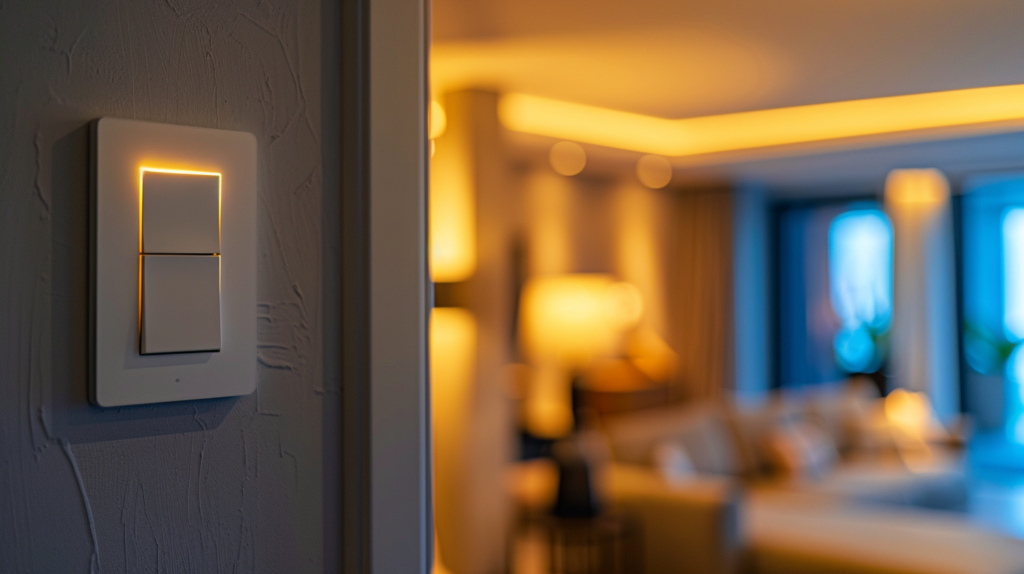
Exploring the differences between step dimming and traditional dimming is like comparing a staircase to a ramp. One takes you through distinct levels, while the other provides a smooth journey to your desired brightness. We’ve seen both in action and found that each has its unique advantages, depending on what you’re looking for in lighting control. Let’s break it down with a simple table that highlights the key differences:
| Feature | Step Dimming | Traditional Dimming |
|---|---|---|
| How it Works | Toggle between preset brightness levels. | Smooth transition across a wide range of brightness. |
| Control Method | Switch toggles preset levels. | Analog control for smooth adjustments. |
| Light Transition | Abrupt or smooth, but limited to presets. | Continuous and smooth transition. |
| Compatibility | Requires specific bulbs for optimal performance. | Works with any dimmable light fixture. |
| Cost | More cost-effective. | May involve more sophisticated controls and thus higher prices. |
We’ve found that step dimming offers a straightforward and budget-friendly approach. It’s perfect when you need clear, defined settings for your lighting. Think of it as having a few favorite spots you like to sit in within a room, each with its own light setting.
On the flip side, traditional dimming lets you slide through brightness levels like you’re adjusting the volume on your favorite song. It’s all about getting that perfect feel, whether you’re reading a book, enjoying dinner, or watching a movie while winding down for the night.
Benefits of using step dimming

Step dimming gives us more control over our lighting, saves energy, and makes LED dimming easier than ever before.
We like step dimming for its several benefits. It lets us create the perfect ambiance by adjusting the brightness to preset levels with a simple flick of a switch. This feature is a game-changer for LED bulbs, which can be tricky to dim with traditional dimmers. It also doesn’t require running extra wiring to the fixture, unlike some dimming methods.
Step dimming also helps save energy by allowing us to lower the light output when we don’t need full brightness.
In our experience, step dimming has been a cost-effective way to get the lighting we want without complicated installations or expensive control systems.
How to Use Step Dimming
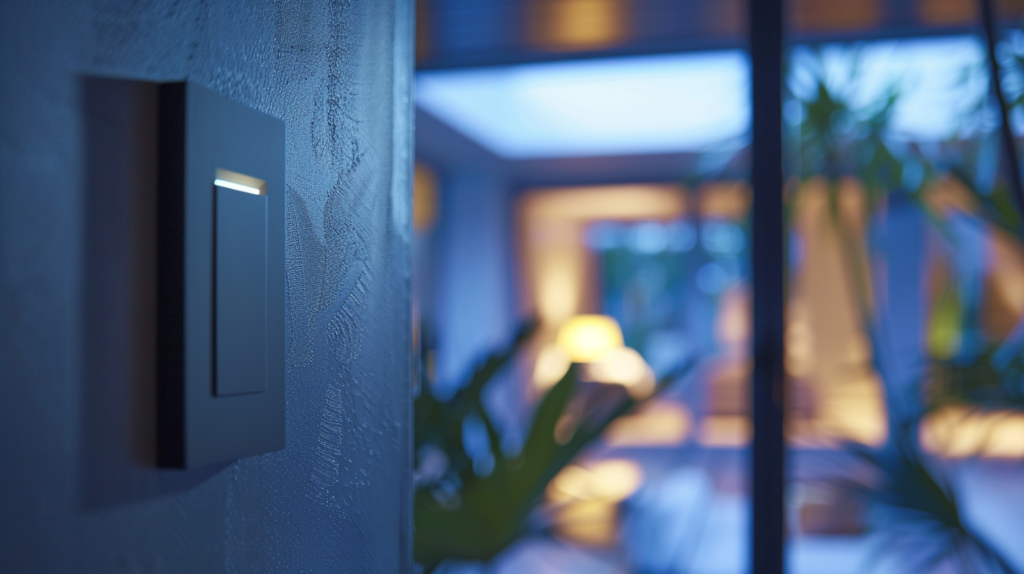
You can use step dimming with compatible light sources, such as LED lighting. To adjust the brightness level, simply cycle the light switch through the preset intensity levels.
Compatible light sources
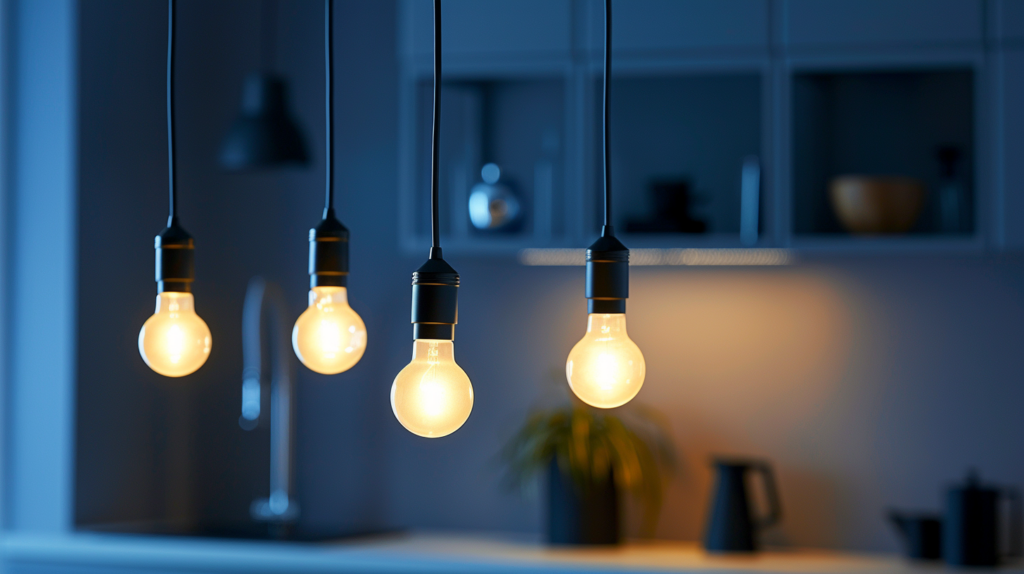
Step dimming works with specific light sources that are compatible with this dimming method. We can use incandescent and halogen bulbs, as well as certain types of LED lights designed to work with step dimming systems.
It’s essential to check the packaging or consult with the manufacturer to ensure the light bulbs or fixtures we choose are suitable for step dimming applications.
When selecting LED lights for step dimming, we should look for those labeled as “dimmable” or “compatible with step dimming.” Not all LED lights can be dimmed effectively, so it’s crucial to pick the right ones to avoid issues like flickering or uneven brightness levels.
How to adjust the brightness level
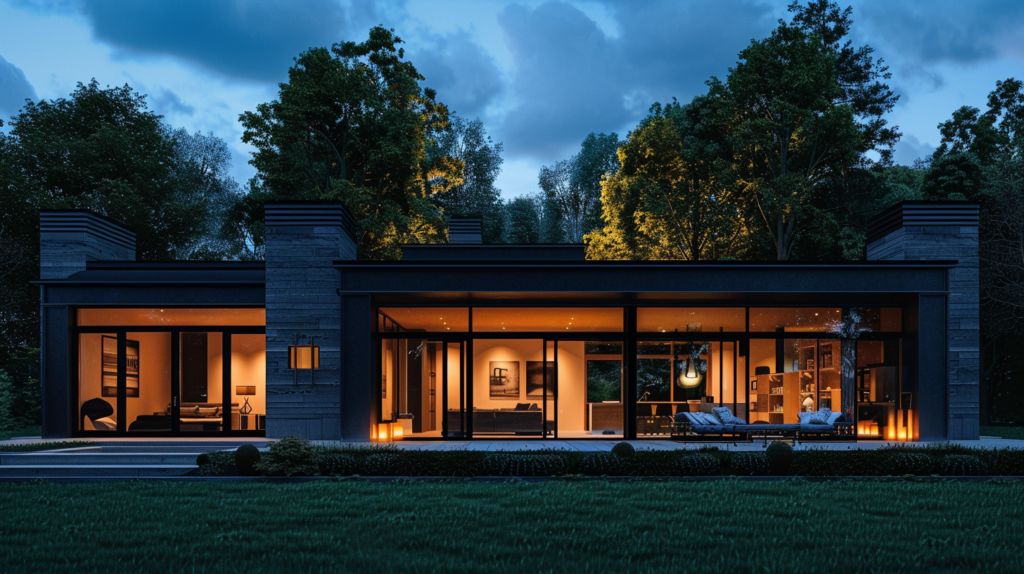
Here are the steps to adjust the brightness level when using a step dimming switch:
- Locate the step dimmer switch: Find the step dimmer switch, which is usually a rocker or push-button switch, near the light fixture you want to control. These switches often have a small LED indicator light to show the current brightness level.
- Press the switch to cycle through brightness levels: Each time you press the switch, it will cycle through the pre-set brightness levels. Most step dimmers have 2-4 levels, such as 25%, 50%, 75%, and 100% brightness. The LED indicator light will change to reflect the current level.
- For example, if the light is currently at 100% brightness and you press the switch once, it will change to 75% brightness. Press it again, and it will go to 50%, and so on.
- If you press and hold the switch for a few seconds, it may automatically cycle through all the brightness levels until you release it, allowing you to quickly find your desired setting.
- Adjust the brightness to your preference: Keep pressing the switch until you reach the brightness level you want for your specific lighting needs, whether it’s for ambient lighting, task lighting, or accent lighting.
- In my experience, I’ve found that lower brightness levels, around 25-50%, work well for creating a cozy atmosphere in living rooms or bedrooms. Higher levels, like 75-100%, are better for kitchens, bathrooms, or workspaces where you need more light.
- Enjoy your perfectly lit space: Once you’ve selected your preferred brightness level, the step dimmer will maintain that level until you change it again, ensuring consistent illumination for your room or area.
- The great thing about step dimming is that you can easily change the ambiance of a room by adjusting the brightness to suit your mood or activity, without the need for complicated dimming systems or expensive smart bulbs.
Limitations of step dimming
One potential limitation of step dimming is that it typically offers a fixed number of brightness levels, usually between two and five. This can be less flexible than traditional dimming systems that allow for a wider range of brightness adjustments.
Installation and Maintenance of Step Dimming

Recommended brands and products
When it comes to recommended brands and products for step dimming, Lutron is a top choice. Their dimmers are known for their reliability and ease of installation. We also suggest using high-quality LED or CFL lamps from trusted brands like Philips, GE, or Cree.
To ensure optimal performance and longevity, it’s crucial to choose dimmer controls that are compatible with your specific lighting setup. Look for products that are rated for the wattage and type of bulbs you’re using.
Troubleshooting common issues
Step dimming systems can occasionally experience issues. Let’s go over some common problems and how to troubleshoot them:
- Drop out: This happens when the light abruptly turns off before reaching the lowest dimming stage. To fix it:
- Check the wiring connections and make sure they are secure. Loose wires can cause drop out.
- Verify that the dimmer is compatible with the light source. Some bulbs may not work well with certain dimmers.
- If using LED lights, ensure they are dimmable. Non – dimmable LEDs will not function properly with step dimming.
- Flickering or sudden dimming: If the lights flicker or dim unexpectedly, try these solutions:
- Inspect the dimmer switch for any signs of damage or wear. A faulty switch can lead to erratic behavior.
- Confirm that the total wattage of the lights does not exceed the dimmer’s capacity. Overloading can cause issues.
- Replace any old or burnt – out bulbs. A single malfunctioning light can affect the entire circuit.
- Inconsistent brightness levels: When the lights do not maintain a steady brightness at each step, consider these options:
- Adjust the dimmer’s calibration settings. Consult the manufacturer’s instructions for guidance.
- Ensure all lights on the circuit are the same type and wattage. Mixing different bulbs can result in uneven dimming.
- Check for any voltage fluctuations in the electrical system. A voltage stabilizer may be necessary.
- Humming or buzzing sounds: If the dimmer emits noise, try the following:
- Tighten any loose screws or connections in the switch or junction box. Vibrations can cause humming.
- Install a dimmer rated for the total wattage of the lights. An undersized dimmer may produce buzzing sounds.
- Consider adding a noise filter or suppressor to the circuit to minimize electrical interference.
By addressing these common issues, you can ensure your step dimming system operates smoothly, providing the desired lighting control for your space.
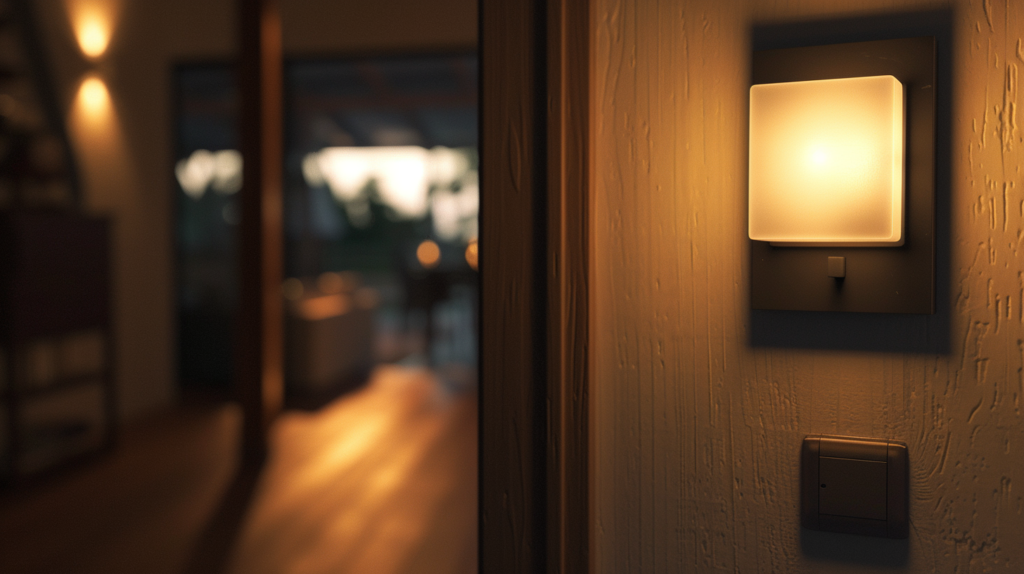
F.A.Q. – Step Dimming
What is step dimming and how does it work?
Step dimming is a lighting control system that allows users to adjust the brightness of their lights through predefined steps. It automatically switches to the next pre-set level each time the light is switched on, regardless of the previous setting.
Can I use step dimming with my existing light switches?
Yes! Step dimming can be used with your existing switches – no need to replace them. The dimmer switches are installed in the light fixture housing itself.
Is step dimming energy efficient?
Absolutely. By precisely calibrating the brightness levels, step dimming helps save energy compared to traditional lighting. It’s a great low-voltage, energy efficient solution.
Can the brightness levels be altered to my desired settings?
It depends on the light fixture. Some fixtures allow the levels to be programmed and changed over time based on your preferences.
Do I need a special ballast for step dimming?
Most LED step dimming fixtures will have the function built into the driver. For switches, you would need to match the dimming method to the fixture.
Is step dimming suitable for all types of lighting?
Step dimming is incredibly versatile and can be used in a wide range of applications – from residential to commercial, and even marine lighting.
I have been the project manager for Modern.Place since early 2016, spending three of those years working overseas on the manufacturing & procurement side of the LED lighting industry. Constantly learning and passing on knowledge to others while excited for what the lighting industry will involve into next.

